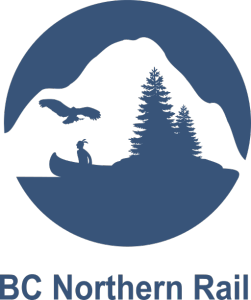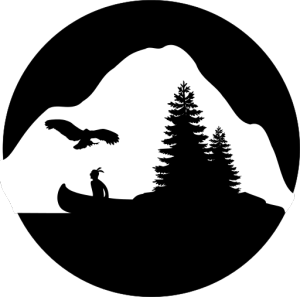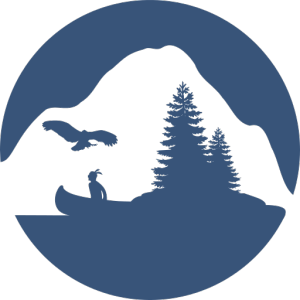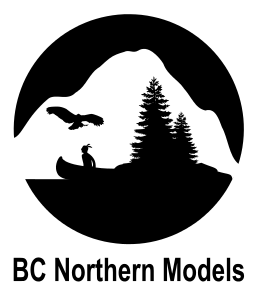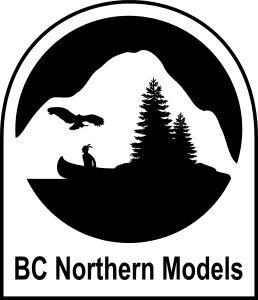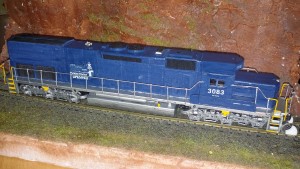It’s been years since I’ve been an active model-railroader. I recently went through the attic and retrieved a huge box with my BC Northern Locomotives and Cars. I was surprised, how much has piled up over the time. Now I’m quite eager to get back into the hobby. Dusting of rolling stock and the website alike. The latter requires translating the English articles into German and the German articles into English, as well as the bilingual articles to both laguages. Tedious work, but I feel it’s necessary. In short, I’d like to bring the short line back to live.
One aspect that has always been a primary goal is operations. There are a few options available. Car Cards, Waybills, Switch Lists, some sort of electronic inventory and semi automated car routing. And there are ideas forming in my mind.
Also digital command control (DCC) is a must. Preferably by utilizing handheld DCC throttles. And since I have loads of close to obsolete PCs and Macs And tiny plug servers standing around, I always planned to use computerization as part of the design. The open soure Java Model Railroad Interface (JMRI) provides this sort of interaction. And it has an operations software that includes everything I would want.
Crew communication or intercom will likely be the easiest part utilizing smartphones and bluetooth headsets. The same smartphones can serve as handheld DCC throttles. Discord is a suitable software offering multiple channels and compatibility to various operating systems. Well that portion is quite easy to implement, but will only be required when hosting large operating sessions. That’s years into the future from now.
There is a clinic by David Haynes and a forum thread, that describes how to set up operations in JMRI: Operations with JMRI. Let’s ee what we can learn from that.
Some Links about Ops:
JMRI Operations Manual, JMRI Dispatcher Manual and JMRI Web Access Manual
Most definetely JMRI will be a part of my layout concept. I used it years ago and it just became better. I’m excited to test the car routing feature.
So in order to get going, I have a few options ranging from an HO shelf layout over a small N-Scale tabletop layout to a larger modular HO free-mo style layout. HO is my scale of choice. I do even consider to sell the N-Scale stuff.
With these options at hand, the next big choice is the choice of time devotion to the hobby. There is a huge interest, but only a couple of hours per week available for the hobby. Thus a small layout would cater to this circumstance. Perhaps a combination of the first and the latter seems like a good idea. But how’s that possible?
I’m actually thinking about building a larger shelf layout with transition elements to free-mo modules.This would enable me to move the shelf layout to a location, where a free-mo setup is available. Or to build the connecting modules myself. The transition elements are to blend the larger switching layout into a free-mo club setup by taking care that the width and length line up with multiples of standard free-mo modules.
Key Layout Elements
This heading sounds familiar?
Key layout elements that I plan to include are all that make the BC Northern Railway stand out in the crowd. Of course this would be way too much to cramp into a little place. So I plan to follow the modular aproach, which theoreticaly will enable me to capture everything, but only to use a smaller part of the total modules.
Aquatic Rail Link (ARL)
A BC Northern Rail owned freelanced shipping and stevedooring company connecting the ports of Port Simpson, the fictional BCNR HQ town of Port Adams and Stewart/Hyder with Whittier Alaska. I basically take inspiration from Alaska Marine Lines based in Seattle and CNs Aquatrain barge services out of Prince Rupert. I plan to build combined rail and car ferryboat, a dedicated railferry and a barge that also carries (stacked) containers, as well as vehicles, boats, semi trailers and machinery above the railroad tracks, supported by appropriate scaffolding (complete with its tug boat). If you are interested into this kind of barge, follow this link to the portside webcams of Alaska Marine Lines.
The barge and ships will all share a similar lower hull based on the car float’s deck. Same end geometry, same width, but different length by elongating the mid section. This basic lower hull will be made of extruded styrofoam board. On top of that there will be a (removable) framework for the superstructure, which sides will be „plated“ with either sheet styrene (polystyrol) or with papersealed foam board (to construct the hull portion of the larger ferry). The curved (lifting) bow section will likely be 3d printed, as will be the framework for the superstructure, most larger detail parts and some mountings for the tracks. Same goes for the rear of the ship. There are several matching 3d ship models available on the Internet wich need to be solidified and cleaned for the printing process, but have all the geometry and proportions already in place. Nice. I will post the renderings when I have them ready.
The barge slip will also be a part made on a 3d printer. It will accomodate two handlaid turnouts to access the four tracks of the vessels. I will need to make my own design for that part and I will likely choose a modern design. Maybe with a car ramp above the tracks.
Further information will be posted in separate articles linked from here.



